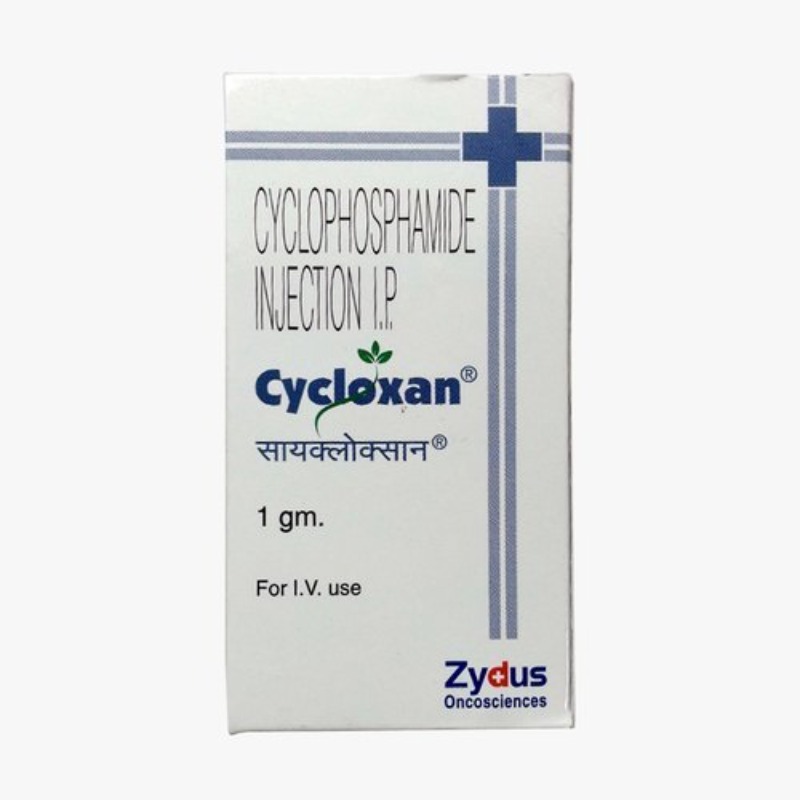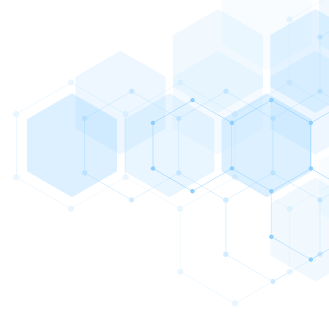
Prescription Required
Price :
₹159.6
₹168 5% OFF
Product SKU: CYCLOXAN 1GM INJ

MECHANISM OF ACTION
• Inactive in its parent form.• Activated by the liver cytochrome P450 microsomal system to the cytotoxic
metabolites phosphoramide mustard and acrolein.
• Cyclophosphamide metabolites form cross-links with DNA, resulting in inhibition of DNA synthesis and function. • Cell cycle–nonspecific agent, active in all phases of the cell cycle. • Potent immune modulator at low doses that targets suppressive regulatory immune cells within the tumor microenvironment while enhancing effector T cells. ABSORPTION Well absorbed by the GI tract with a bioavailability of nearly 90%. DISTRIBUTION Distributed throughout the body, including brain and CSF. Also distributed in milk and saliva. Minimal binding of parent drug to plasma proteins; however, about 60% of the phosphoramide mustard metabolite is bound to plasma proteins. INDICATIONS 1.Breast cancer. 2.Non-Hodgkin’s lymphoma. 3.Chronic lymphocytic leukemia. 4.Ovarian cancer. 5.Bone and soft tissue sarcoma. 6.Rhabdomyosarcoma. 7.Neuroblastoma and Wilms’ tumor. DOSAGE RANGE 1.Breast cancer—When given orally, the usual dose is 100 mg/m2 PO on days 1–14 given every 28 days. When administered IV, the usual dose is 600 mg/m2 given every 21 days as part of the AC or CMF regimens.
2.Non-Hodgkin’s lymphoma—Usual dose is 400–600 mg/m2 IV on day 1 every 21 days, as part of the CVP regimen, and 750 mg/m2 on day 1 every 21 days, as part of the CHOP regimen.
3.High-dose bone marrow transplantation—Usual dose in the setting of bone marrow transplantation is 60 mg/kg IV for 2 days. DRUG INTERACTION 1 Phenobarbital, phenytoin, and other drugs that stimulate the liver P450 system— Increase the rate of metabolic activation of cyclophosphamide to its cytotoxic metabolites. DRUG INTERACTION 2 Anticoagulants—Cyclophosphamide increases the effect of anticoagulants, and thus the dose of anticoagulants may need to be decreased depending on the coagulation parameters, PT/INR. DRUG INTERACTION 3 Digoxin—Cyclophosphamide decreases the plasma levels of digoxin by activating its metabolism in the liver. DRUG INTERACTION 4 Doxorubicin—Cyclophosphamide may increase the risk of doxorubicin-induced cardiotoxicity. SPECIAL CONSIDERATIONS 1.Use with caution in patients with abnormal renal function. Dose should be reduced in the setting of renal dysfunction. CrCl should be obtained at baseline and before each cycle of therapy.
2.Administer oral form of drug during the daytime.
3.Encourage fluid intake of at least 2–3 L/day to reduce the risk of hemorrhagic cystitis. High-dose therapy requires administration of IV fluids for hydration.
4.Encourage patients to empty bladder several times daily (on average, every 2 hours) to reduce the risk of bladder toxicity.
5.Pregnancy category D. Breastfeeding should be avoided. TOXICITY 1 Myelosuppression is dose-limiting. Mainly leukopenia, with nadir occurring at 7–14 days, with recovery by day 21. Thrombocytopenia may occur, usually with high-dose therapy. TOXICITY 2 Bladder toxicity in the form of hemorrhagic cystitis, dysuria, and increased urinary frequency occurs in 5%–10% of patients. Time of onset is variable and may begin within 24 hours of therapy or may be delayed for up to several weeks. Usually reversible upon discontinuation of drug. Uroprotection with mesna and hydration must be used with high-dose therapy to prevent bladder toxicity. TOXICITY 3 Nausea and vomiting. Usually dose-related, occurs within 2–4 hours of therapy, and may last up to 24 hours. Anorexia is fairly common. TOXICITY 4 Alopecia generally starting 2–3 weeks after starting therapy. Skin and nails may become hyperpigmented. TOXICITY 5 Amenorrhea with ovarian failure. Sterility may be permanent. TOXICITY 6 Cardiotoxicity is observed with high-dose therapy. TOXICITY 7 Increased risk of secondary malignancies, including acute myelogenous leukemia and bladder cancer, especially in patients with chronic hemorrhagic cystitis. TOXICITY 8 Immunosuppression with an increased risk of infections. TOXICITY 9 SIADH. TOXICITY 10 Hypersensitivity reaction with rhinitis and irritation of the nose and throat. Usually self-resolving in 1–3 days, but steroids and/or diphenhydramine may be required.
No Review Found.
Copyright © 2022-24 Health29. All Rights Reserved. Design & Developed By : Innovative Solution Technologies | ISOLS Group
Login To Comment